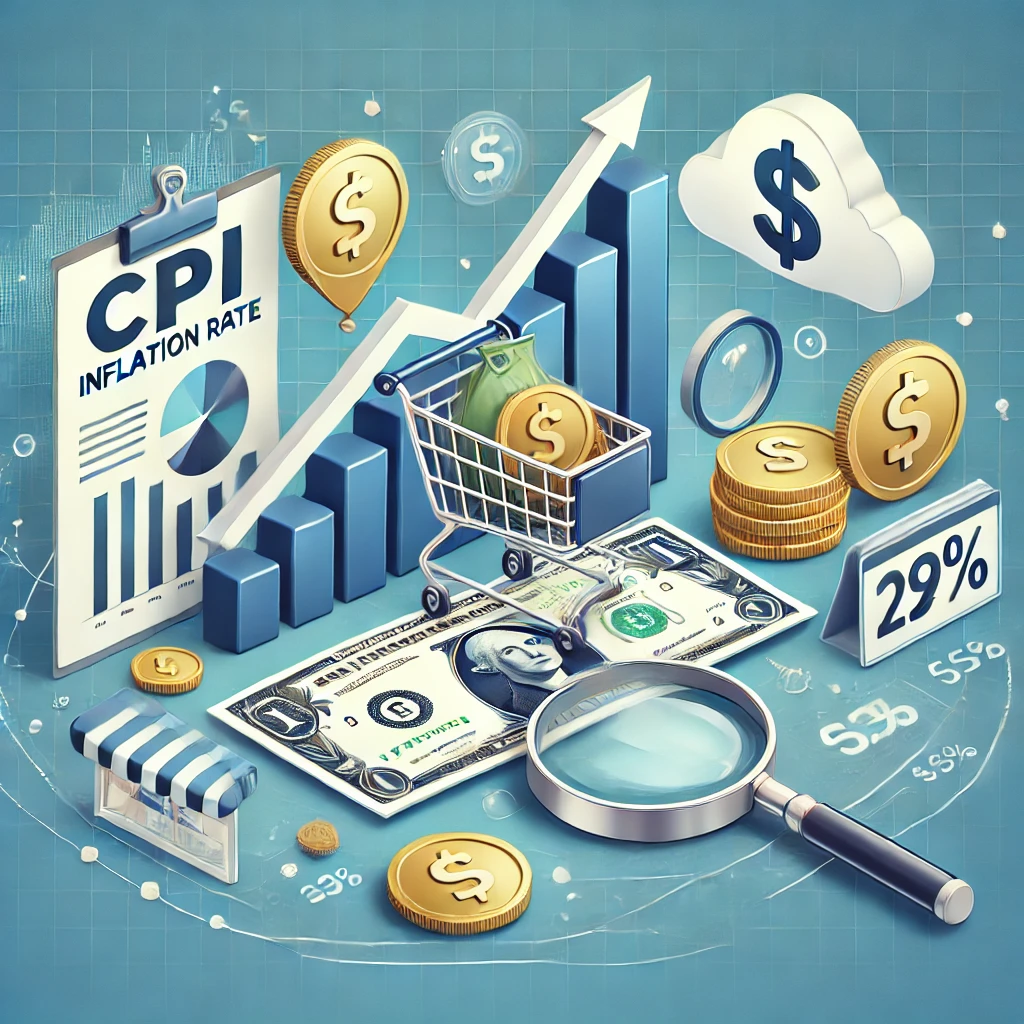CPI Inflation Rate & Its Impact On The Economy—Explained
The CPI inflation rate is a key indicator in the economy. The CPI directly impacts policy decisions, consumer expenditure, and financial markets. Individuals, businesses, and governments monitor this rate for changes in the overall cost of goods and services over time. But what is the CPI inflation rate, and why does it matter? This blog will define it, calculate its impact, and present successful strategies for surviving inflationary pressures.
What is the CPI’s inflation rate?
CPI inflation rate is the percentage change in the Consumer Price Index (CPI) in a given time frame. The Consumer Price Index (CPI) is used to calculate how much, on average, it costs to purchase a basket of goods and services in urban areas.
This basket includes food, housing, transportation, healthcare, and education. The change to CPI inflation rate is used by economists and policymakers to gauge the value of money and the overall cost of living. How Is the Inflation Rate Measured by the CPI?
To compute the CPI inflation rate, the current Consumer Price Index’s value is compared to the index’s value for the previous period. The formula is: For example, if last year the CPI was 250, and now it is at 260, the rate of CPI inflation would be:
That means that consumer prices are up about 4 percent over the past year. Determinants of CPI Inflation Rate
Here are a few reasons why the CPI inflation rate may vary: Demand-pull inflation: Demand-pull inflation occurs when the demand for goods and services outstrips supply, causing prices to rise and inflation to increase.
Cost-Push Inflation: When production costs such as wages or raw materials increase, businesses are compelled to increase prices. Central banks use flow and interest rates to hit the inflation target.
Supply Chain Disruptions: Events such as pandemics, natural disasters, or geopolitical tensions can limit supply and drive up prices.
Taxation and subsidies, that is, fiscal policies, affect inflation trends. Cached CPI Inflation Rate Definition: What is the CPI inflation rate?

Inflation Rate CPI Effects on Economic Sectors:
1. Consumers
Inflation is a general rise in prices that decreases the ability to buy consumer goods. For example, if wages do not increase in sync with inflation, consumers may struggle to afford necessities.
2. Businesses
Stubborn inflation raises production costs, which ultimately pass through to consumers in the form of higher prices. Some companies may pass along these costs to customers, while others would have to operate with lower profit margins.
3. Investors
Inflation affects stock and bond markets. An overly high pace of inflation can contribute to uncertainty and market volatility, while moderate inflation can encourage economic expansion and stock prices.
4. Monitor the CPI inflation rate for central bank authorities. Monitor the CPI inflation rate. For example, the Federal Reserve might cut interest rates to stimulate economic activity or raise interest rates to tame inflation. Ways to Cope With the Impact of Inflation. Individuals and businesses can minimize the impact of changing the CPI inflation rate by:
1. For Individuals:
When creating a budget, you should prioritize the essential expenses and trim the fat on discretionary spending. What regression and a bottom-up approach would do is to diversify over multiple asset classes such as equities, credit, commodities, and real estate.
3. Increase Your Income: Request raises, side jobs, etc.
For Businesses:
Cost-cutting leads to operation streamlining, hence reducing unnecessary expenditures. Revenue Strategies: Modify pricing strategies due to inflationary changes.
Hedging: Financial derivatives such as futures contracts can be used to mitigate price fluctuations.
Needs of governments: Policy Changes: Monetary and fiscal policies are adopted to sustain economic stability. Address Supply Chains: Reduce reliance on foreign products to make prices stable.
Financial Planning: Inform citizens of inflation and how to plan financially.
Historical Trends in CPI Inflation Rates The CPI inflation rate fluctuates widely over time. For instance:
Inflation was high in the 1970s due to oil crisis and economic turbulence. In the 1980s and 1990s, central banks began aggressively tightening monetary policy to keep inflation in check. 2008 Financial Crisis: Consumer demand dropped, easing inflation.
COVID-19 Pandemic: Supply chain disruptions led to inflation spikes.
Knowing those trends also makes predicting future inflation movements and preparing for economic shifts easier.
Conclusion
The CPI inflation rate is an important measure that affects economies, businesses, and personal financial situations. Understanding the causes, effects, and methods to combat it may help people and businesses to make informed decisions in the face of rising prices. To ensure economic stability and resilience, companies must adapt proactively to inflation trends in an ever-evolving market environment. Staying informed and being prepared will aid us in better defending against inflationary pressures and any unexpected changes in the economy.

